Related Research Articles
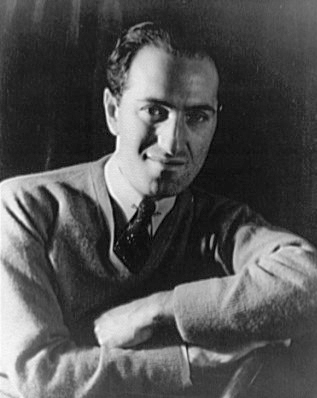
George Gershwin was an American composer and pianist whose compositions spanned popular, jazz and classical genres. Among his best-known works are the orchestral compositions Rhapsody in Blue (1924) and An American in Paris (1928), the songs "Swanee" (1919) and "Fascinating Rhythm" (1924), the jazz standards "Embraceable You" (1928) and "I Got Rhythm" (1930), and the opera Porgy and Bess (1935), which included the hit "Summertime".
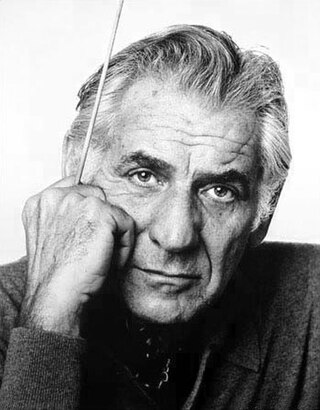
Leonard Bernstein was an American conductor, composer, pianist, music educator, author, and humanitarian. Considered to be one of the most important conductors of his time, he was the first American-born conductor to receive international acclaim. Bernstein was "one of the most prodigiously talented and successful musicians in American history" according to music critic Donal Henahan. Bernstein's honors and accolades include seven Emmy Awards, two Tony Awards, and 16 Grammy Awards as well as an Academy Award nomination. He received the Kennedy Center Honor in 1981.
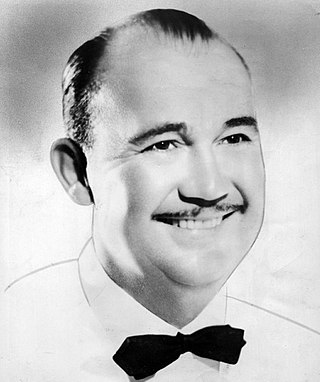
Paul Samuel Whiteman was an American bandleader, composer, orchestral director, and violinist.

Cabell Calloway III was an American jazz singer and bandleader. He was a regular performer at the Cotton Club in Harlem, where he became a popular vocalist of the swing era. His niche of mixing jazz and vaudeville won him acclaim during a career that spanned over 65 years.

Gaetano Alberto "Guy" Lombardo was a Canadian and American bandleader, violinist, and hydroplane racer whose unique "sweet jazz" style remained popular with audiences for nearly five decades.

Victor August Herbert was an American composer, cellist and conductor of English and Irish ancestry and German training. Although Herbert enjoyed important careers as a cello soloist and conductor, he is best known for composing many successful operettas that premiered on Broadway from the 1890s to World War I. He was also prominent among the Tin Pan Alley composers and was later a founder of the American Society of Composers, Authors, and Publishers (ASCAP). A prolific composer, Herbert produced two operas, a cantata, 43 operettas, incidental music to 10 plays, 31 compositions for orchestra, nine band compositions, nine cello compositions, five violin compositions with piano or orchestra, 22 piano compositions and numerous songs, choral compositions and orchestrations of works by other composers, among other music.

Marvin Frederick Hamlisch was an American composer and conductor. He is one of few people to win Emmy, Grammy, Oscar and Tony awards, a feat dubbed the "EGOT". He and composer Richard Rodgers are the only people to have won those prizes and a Pulitzer Prize ("PEGOT").
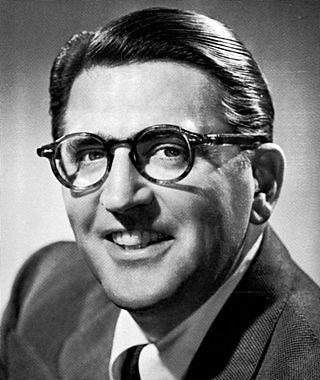
Robert Reiniger Meredith Willson was an American flutist, composer, conductor, musical arranger, bandleader, playwright, and writer. He is perhaps best known for writing the book, music, and lyrics for the 1957 hit Broadway musical The Music Man and "It's Beginning to Look a Lot Like Christmas" (1951). Willson wrote three other musicals, two of which appeared on Broadway, and composed symphonies and popular songs. He was twice nominated for Academy Awards for film scores.

Benjamin Bernard Selvin was an American musician, bandleader, and record producer. He was known as the Dean of Recorded Music.
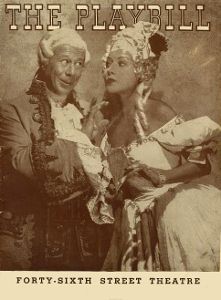
Du Barry Was a Lady is a Broadway musical, with music and lyrics by Cole Porter, and the book by Herbert Fields and Buddy DeSylva. The musical starred Bert Lahr, Ethel Merman and Betty Grable, and the song "Friendship" was one of the highlights. The musical was made into a 1943 Technicolor film Du Barry Was a Lady, starring Red Skelton, Lucille Ball, Gene Kelly and Tommy Dorsey and his orchestra.
Carl Fenton was a pseudonym of Walter G. Haenschen, American bandleader, composer, and radio musician.

Henry "Hank" Sylvern was an American keyboardist, composer, conductor and arranger.
Victor Baravalle (1885–1939) was an Italian-born composer, music director, and conductor, best known for his work on both the stage and film productions of the Jerome Kern and Oscar Hammerstein II musical Show Boat.
Stéphane Denève is a French conductor. He is currently music director of the St. Louis Symphony Orchestra and artistic director of the New World Symphony.
"Pennies from Heaven" is a 1936 American popular song with music by Arthur Johnston and lyrics by Johnny Burke. It was introduced by Bing Crosby with Georgie Stoll and his Orchestra in the 1936 film of the same name.
Joseph Taylor Jordan was an American pianist, composer, real estate investor, and music publisher. He wrote over 2000 songs and arranged for notable people such as Florenz Ziegfeld, Orson Welles, Louis Armstrong, Eddie Duchin, Benny Goodman, and others.

Gloria Parker was an American musician and bandleader who had a radio show during the big band era. The Gloria Parker Show was broadcast nightly from 1950 to 1957, coast to coast on WABC. She played the marimba, organ, and singing glasses. Dubbed Princess of the Marimba, she conducted the 21-piece Swingphony from the Kelly Lyceum Ballroom in Buffalo, New York. This was the largest big band led by a female bandleader. Edgar Battle and Walter Thomas were arrangers for the Swingphony.
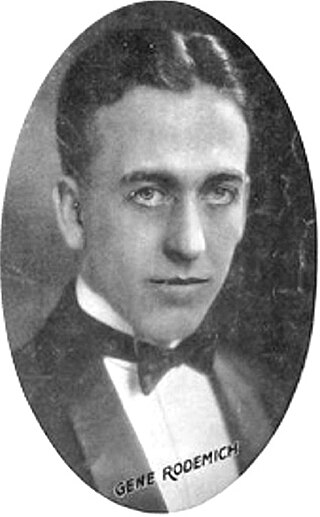
Eugene Frederick Rodemich was a pianist and orchestra leader, who composed the music for numerous films in the late 1920s and early 1930s, mostly cartoons and live-action short subjects produced by The Van Beuren Corporation and distributed by RKO Radio Pictures.
The Song Shop is an American radio musical variety program that was broadcast on CBS from September 10, 1937, through June 3, 1938. Episodes featured old and new songs, with the highlight each week being a skit that combined music and dialogue to relate the story of a song.
References
- 1 2 3 4 Lee, William F. (2005). American Big Bands. Hal Leonard Corporation. pp. 153–154. ISBN 978-0-634-08054-8. Archived from the original on July 12, 2022. Retrieved February 14, 2022.
- 1 2 3 4 5 Tyler, Don (2007). Hit Songs, 1900-1955: American Popular Music of the Pre-Rock Era. McFarland. pp. 388–389. ISBN 978-0-7864-2946-2. Archived from the original on July 12, 2022. Retrieved February 14, 2022.
- 1 2 3 4 5 6 7 "Gus Haenschen, Who Once Had Orchestra Here, Now 'Big Shot' in Radio". The St. Louis Star and Times. January 20, 1930. p. 3. Archived from the original on February 15, 2022. Retrieved February 15, 2022– via Newspapers.com.
- ↑ "The Final Curtain". Billboard. July 5, 1947. p. 49. Archived from the original on July 12, 2022. Retrieved February 15, 2022.
- 1 2 3 4 5 6 Irwin, Virginia (April 24, 1949). "'Those Were Wonderful Times'". St. Louis Post-Dispatch. p. 3 G. Archived from the original on February 15, 2022. Retrieved February 15, 2022– via Newspapers.com.
- 1 2 3 4 5 6 7 Kennedy, T. R. Jr. (July 21, 1946). "The Haenschen Formula" . The New York Times. p. X 7. Archived from the original on February 14, 2022. Retrieved February 14, 2022.
- 1 2 3 "Increased purchasing power evident in St. Louis" (PDF). The Talking Machine World. XIV (9): 43. September 15, 1918. Archived (PDF) from the original on October 12, 2021. Retrieved February 14, 2022.
- 1 2 "'Mother' Song Series" (PDF). Radio Guide. November 14, 1931. p. 3. Archived (PDF) from the original on March 3, 2022. Retrieved April 1, 2022.
- ↑ "WLWL and WPG cited" . The New York Times. July 8, 1931. p. 33. Archived from the original on April 1, 2022. Retrieved April 1, 2022.
- ↑ Cox, Jim (2003). Frank and Anne Hummert's Radio Factory: The Programs and Personalities of Broadcasting's Most Prolific Producers. McFarland. pp. 54–55. ISBN 978-0-7864-1631-8. Archived from the original on July 12, 2022. Retrieved February 15, 2022.
- ↑ "Music--As Written: New York". Billboard. April 8, 1950. p. 20. Archived from the original on July 12, 2022. Retrieved February 15, 2022.
- ↑ "Gus Haenchen, Air Revue Conductor, Versatile Artist". The Rock Island Argus. August 12, 1937. p. 5. Archived from the original on February 15, 2022. Retrieved February 15, 2022– via Newspapers.com.
- ↑ Harris, Laurie Lanzen; Ganson, Paul (2016). The Detroit Symphony Orchestra: Grace, Grit, and Glory. Wayne State University Press. ISBN 978-0-8143-4062-2. Archived from the original on July 12, 2022. Retrieved February 15, 2022.
- 1 2 3 "Gus Haenschen, 90; Orchestra Conductor On Early Radio Shows" . The New York Times. March 29, 1980. p. 28. Archived from the original on February 14, 2022. Retrieved February 14, 2022.
- 1 2 3 Library of Congress Copyright Office (1948). Catalog of Copyright Entries: Third series. p. 80. Archived from the original on July 12, 2022. Retrieved February 14, 2022.
- ↑ Bastin, Bruce (2012). The Melody Man: Joe Davis and the New York Music Scene, 1916-1978. Univ. Press of Mississippi. ISBN 978-1-4968-0123-4. Archived from the original on July 12, 2022. Retrieved February 14, 2022.
- ↑ Catalog of Copyright Entries: Musical compositions. Library of Congress, Copyright Office. 1911. p. 1567. Archived from the original on July 12, 2022. Retrieved February 14, 2022.
- ↑ "Walter Haenschen". Internet Broadway Database. The Broadway League. Archived from the original on February 15, 2022. Retrieved February 15, 2022.
- ↑ "Theaters prosper in Washington". Dramatic Mirror of Motion Pictures and the Stage. February 16, 1918. p. 32. Archived from the original on July 12, 2022. Retrieved February 15, 2022.